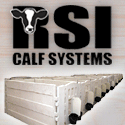 |
 |

|
|
|
Nebraska Ag News Headlines |
 |
Poultry Litter's Agronomic and Natural Resource Benefits
Nebraska Ag Connection - 01/20/2020
Many Nebraska farmers are experienced with using beef feedlot and swine manures as fertility products. Over the next few years, Nebraska crop farmers may have opportunities to consider using broiler poultry litter as a soil amendment and fertilizer. Other
regions of the U.S. have a history of using poultry litter in crop production from which we can take away a few lessons, reports Rick Koelsch, University of Nebraska-Lincoln in the Biological Systems Engineering department.
Soils and data scientists at Auburn University, USDA ARS, and University of Florida reviewed the results from 90 research studies and 866 field observations.Their findings provide us with several important insights to consider when using broiler litter in
Nebraska. Koelsch says this article will attempt to answer:
- What is poultry litter's nutrient value?
- Is there a yield benefit from poultry litter?
- Which soils benefit most from poultry litter?
- Is there value from sustained poultry litter use?
What is poultry litter's nutrient value?
In their review, the authors concluded, "...poultry litter's influence on crop productivity is comparable to that of inorganic fertilizer." In multiple situations, poultry litter out yielded inorganic fertilizer.
Broiler litter is a rich source of nutrients critical to corn and soybean production. Most of poultry litter's nitrogen is organic-N, a slow release form available during corn's peak demand for N. It can be surface applied in no-till and minimum-till fields and credited
towards the crops N requirement. A NebGuide on Determining Crop Available Nutrients from Manure provides additional details on estimating poultry litter's N credit.
Among all of the nutrients in poultry litter, phosphorus (P) and potassium (K) will commonly offer the greatest economic value. While additional value can be realized from other nutrients, fields low in P and K benefit the most.Targeting corn and soybean fields
with soil test P2O5 levels less than 20 ppm Bray-1will produce short-term economic benefit. Fields needing K (soil test levels below 125 ppm K2O) offer additional significant fertility value from poultry litter.
Is there a yield benefit from poultry litter?
The collective analysis of data from all of the studies reviewed demonstrated a yield increase of 6% in corn when substituting poultry litter for inorganic fertilizer (based upon 244 observations) and a 14% yield increase for soybeans (based upon 86
observations). The authors suggested that improved soil biological and physical characteristics in fields using poultry litter explained the yield increases. Additionally, they suggested that improved nodulation in soybeans resulting from the abundance of P and
micro-nutrients contributed to the observed soybean yield increases.
The greatest yield benefit observed by this analysis resulted from a fertility program combining poultry litter and inorganic fertilizer. Among the studies investigated, poultry litter and inorganic fertilizer were co-applied in 15 trials. A significant positive effect --
18% increase in crop yields -- was observed compared to inorganic fertilizer alone. The complimentary effect of manure and inorganic fertilizer has been demonstrated in other reviews as well.
Which soils benefit most from poultry litter?
The review revealed that an increase in crop yield associated with poultry litter application was most likely to occur in acidic soils, while little to no response was observed for neutral or basic soils. The benefit to acidic soils was attributed to a liming effect from
poultry litter. Poultry litter treated with an acidifier in the production house to reduce ammonia emissions is typically about pH 7.0. Without the acidifying agent, the pH is approximately 8.0.
Poultry litter typically provided the greatest benefit to medium textured soils (loams, sandy loams, silty clay loams), while producing lower yields in sandy soils when compared to inorganic fertilizer. Again, improved soil physical properties, like increased water
holding capacity and more rapid water infiltration, were offered as a likely explanation for yield improvements. (See Manure Impact on Erosion and Runoff for additional information.) also recognized the importance of improved microbial abundance and activity
and their contribution to nutrient cycling and availability as important benefits from poultry litter. These soil quality benefits were also observed for several years after application in some of the studies reviewed.
The authors proposed several possible explanations for lower yields in sandy soils including low moisture content leading to slower transformation of organic-N to crop available N, split application of inorganic fertilizer during planting or side-dressed, and
greater loss of poultry litter N due to nitrate leaching from applications in advance of planting (UNL Water, April 2018 and Journal of Environmental Management, December 2019). Most studies were conducted in southern states where winter soil temperatures
can transform organic-N to more mobile nitrate forms. Other studies have suggested reductions in soil nitrate losses from animal manures. No explanation was suggested for lower yield observations in clay soils.
Is there value from sustained poultry litter use?
Many of the studies evaluated were performed over several years and results suggested that increasing yield was a result of sustained use of poultry litter over time. The slow mineralization of organic-N over multiple years and increase of other soil nutrient levels
were suggested as a potential explanation.
This benefit from repeated applications must be balanced against greater water quality risk and loss of economic value. Repeat applications of poultry litter will increase soil P and K levels. When soil P and K levels exceed the thresholds commonly used to
recommend supplemental nutrients, much of the economic benefit of poultry litter is lost. Higher soil P levels also increase surface water quality risks. Regions of the US with significant poultry production and limited land resources are experiencing significant
water quality concerns resulting from high soil P levels that contribute to excessive phosphorus runoff.
Application of poultry litter to a single field every 2 to 4 years should produce most soil quality and yield benefits expected and avoid the build-up of soil P levels. For example, a 3-ton-per-acre application of poultry litter every other year should match the P and
K removal by a 250 bu/ac corn and 75 bu/ac soybean rotation. Nebraska's rich land resources for crop production should allow us to avoid these same water quality concerns that will result from annual poultry litter application to the same field. A 250,000 bird
broiler operation (about 6 barns) will need access to 2,000 to 3,000 acres of irrigated cropland to manage the phosphorus in their litter.
Broiler litter resulting from new poultry facilities in Nebraska will be a valuable fertility option for Nebraska crop producers. If applied to the right fields -- those needing the nutrients it provides -- litter can produce significant economic benefits without
contributing to the water quality challenges seen in other regions of high poultry concentration.
|
 |


|
 |
|
Copyright © 2024 - Farms.com. All Rights Reserved. |
 |
|